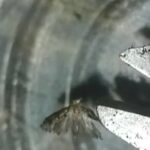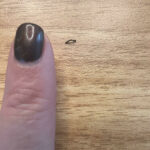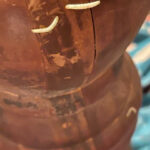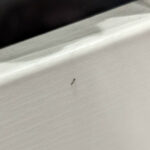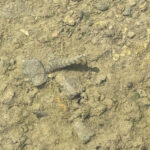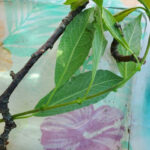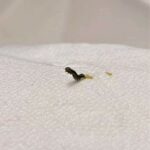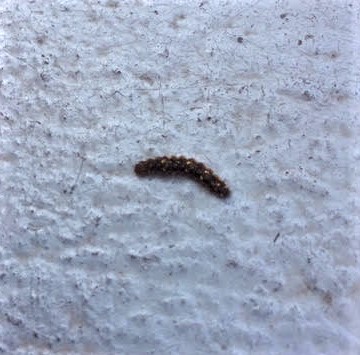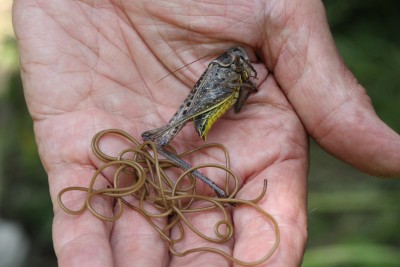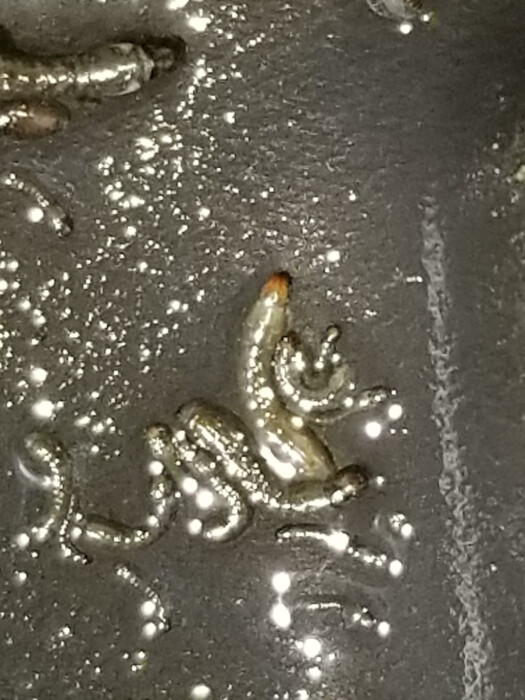
“These worm-like larvae are on the bottom of my koi pond”, writes Steve about the slimy-looking, dark green-gray creatures pictured below. “I live in the San Francisco Bay Area in California. Trying to ID and control as necessary. Thank you.” This photo has us puzzled. Not only do the reflections in the water make it hard to see the worms’ physical characteristics, but they all share this gray-green color which they seem to be bathing in. We can’t tell if this really is the color of the worms, and they match the background, or if they are covered in some kind of slime or sludge.
On top of that, all of the creatures are different sizes and even have different features. For example, the worm-like critter taking center stage has a light brown head and clear segmentation, and we would easily be able to identify this as some type of caterpillar. Yet, the creature in the top left corner of the photo is much bigger, with an almost pear-shaped head which is the same coloration as the rest of its body, which is also patterned with spots: it almost resembles a flat headed borer larva. Then we have all the tinier worms in the photo, some of which resemble smaller versions of the gargantuan worm, some of which resemble the caterpillar, and some of which look like neither one. The thing is, neither caterpillars nor flat headed borer larvae would have any business in a koi pond, as they are not aquatic creatures. Of course, it is possible that these creatures fell into the pond, maybe from a tree (provided there is one that hangs over the pond).
It would have been much easier to identify the creatures if they had been taken out of the water. In any case, koi ponds are at risk of attracting unwanted visitors when left uncleaned for a while. In fact, most bodies of stagnant water will attract insects and worm-like creatures, so it is entirely possible that the creatures Steve found are an array of various species. ‘Premier Ponds and Lighting’ have a fantastic “web page on how to clean a koi pond“, which we recommend he check out. By cleaning out the koi pond, he will be able to control and eliminate the infestation, as well as keep his koi safe from any potential harm.
To conclude, we are not entirely sure what these worm-like creatures are, and what they are doing in the pond. It would have been helpful to have more context about the surrounding area: if there is a tree hanging overhead, we would say these are probably caterpillars that fell from the tree. If there isn’t, we would say it is possible they are aquatic worms or larvae that were attracted by the stagnant water. Regardless, we recommend that Steve clean out his koi pond, as that is the best way to control the infestation and protect his koi. We hope this helps and we wish him the very best!
All About Worms is always free, always reader-supported. Your tips via CashApp, Venmo, or Paypal are appreciated! Receipts will come from ISIPP Publishing.
You might also find these guys interesting!




